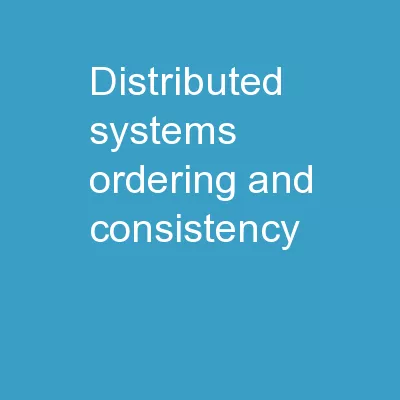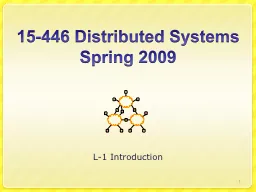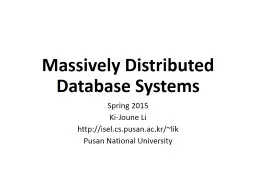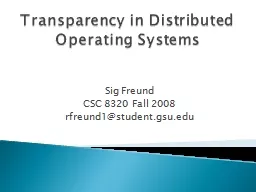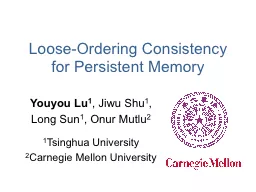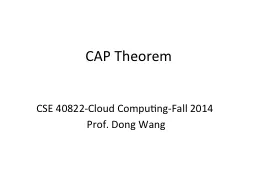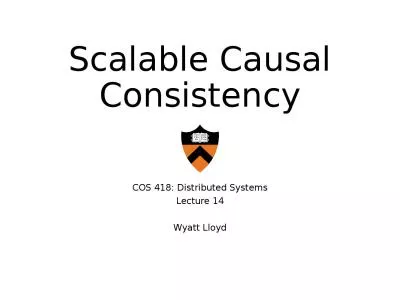PPT-Distributed Systems: Ordering and Consistency
Author : pasty-toler | Published Date : 2019-02-02
October 11 2018 AF Cooper Context and Motivation How can we synchronize an asynchronous distributed system How do we make global state consistent Snapshots checkpoints
Presentation Embed Code
Download Presentation
Download Presentation The PPT/PDF document "Distributed Systems: Ordering and Consis..." is the property of its rightful owner. Permission is granted to download and print the materials on this website for personal, non-commercial use only, and to display it on your personal computer provided you do not modify the materials and that you retain all copyright notices contained in the materials. By downloading content from our website, you accept the terms of this agreement.
Distributed Systems: Ordering and Consistency: Transcript
Download Rules Of Document
"Distributed Systems: Ordering and Consistency"The content belongs to its owner. You may download and print it for personal use, without modification, and keep all copyright notices. By downloading, you agree to these terms.
Related Documents

